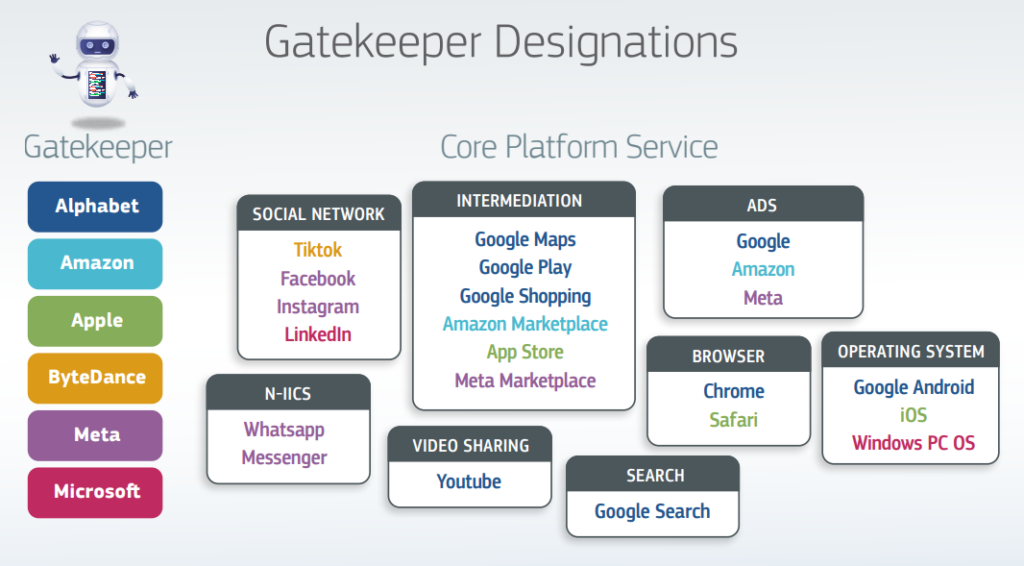On the persistence of exTwitter
With X/Twitter, Elon Musk seems to be singlehandedly illustrating the exciting antitrust concept of Significant Non-transitory Decreases in Quality while having limited impact on X usage (thanks to network effects, aka “all my friends are still there”). Maybe even enough to overcome the European Commission’s concerns of practicality about using the SSDNQ concept as a measure of market power 🤔
Mastodon still seems to be struggling to achieve liftoff, despite significant migration of specific communities (especially academics). While they interact with each other, anecdotally at significantly higher levels than on X/Twitter, this apparently hasn’t generated large enough broader network effects for wider growth. Indeed, Mastodon’s design includes deliberate anti-viral mechanisms (such as so far not enabling quoted posts, and making search opt-in) as part of a greater focus on user safety informed by its popularity with LGBTQ+ and other vulnerable populations. (In October 2023, founder Eugen Rochko reported 1.8m monthly active users. This is impressive, but still less than 0.75% of X’s daily active users 😬.)
Bluesky, with its various recommendation feeds, seems to be making individual posts go a lot more viral (judging by the like/repost stats) but I don’t know if that will ultimately prove more important to achieving critical mass. It also seems (purely anecdotally) to have attracted more journalists/writers (not least through its similar user interface to X), who perhaps in turn are attracting more followers to the platform — we know the vast majority of X/Twitter users post very infrequently. (Threads has a more explicit celebrity-led approach, but it isn’t clear that is succeeding either. Meta of course has the great advantage it can push its Instagram and Facebook users towards the platform. In February 2024, Threads was estimated to have 100m monthly active users.)
Bluesky compares itself to Mastodon as follows:
On Mastodon, your “instance”, or server, determines your community, so your experience depends on which server you join. An instance can send and receive posts from other instances, but it doesn’t try to offer a global view of the network. Your Mastodon server is part of your username, and becomes part of your identity. On Bluesky, your experience is based on what feeds and accounts you follow, and you can always participate in the global conversation (e.g. breaking news, viral posts, and algorithmic feeds).
I’m looking forward to some very large measurement studies which tease out the dynamics and drivers in usage of these types of social networking service 🤓 (let me know if I missed any!). You could even compare individual users across services where they give multiple service usernames in their profiles, as is now common on X.
For example, I’d hypothesise the global Mastodon graph looks like a large number of weakly-connected communities with stronger intra- than inter-community interaction, while Bluesky is more strongly globally connected, with higher levels of engagement with a small number of posts but a long tail of weak interaction. How does this affect ongoing engagement and growth (and other factors, such as harassment)? How effectively is Mastodon’s community-based approach to moderation working (and what will Bluesky’s plug-in moderation regime look like in practice?)
I’m frustrated but not entirely surprised it has proven just too difficult to synchronise the large-scale exit from X apparently necessary to create a sufficient competitor. Hence my continued focus on interoperability requirements for gatekeeper platforms like X, FB & LinkedIn. (The latter two are already designated under the Digital Markets Act; the former could be, I think, under the qualitative designation process in Art. 3(8). X certainly isn’t worth €75bn these days 🤭)
I’m not the only frustrated X user:
Nor LinkedIn! (I killed my FB account many years ago in disgust at its privacy policies.)
A friend suggests a user survey to illustrate the ongoing drop in quality (not Small, which usually is attached to the concept of SSNIPs and SSNDQs). And indeed advertisers (and the ever-increasing groups of ex-advertisers)! Musk is f*cking BOTH sides of his 2-sided market! 🤬
PS From a traditional competition law perspective, this raises the question of how many distinct antitrust markets exist in the broad field of social networking services.
There are at least two: professionally focused (principally LinkedIn) and services focused on sharing content with friends and family (Facebook). X is used for both, but what makes it most distinctive (and of wider public policy interest) is its nature as a “public square” for politicians, businesses, journalists, civil society and others having public debates about politics and policy. Bluesky (see quote above) is explicitly targeting this market.
Perhaps a fourth — or a separate category entirely, as it is to some extent in the Digital Markets Act — would be social media, partly or wholly targeted at a public audience, like YouTube, Snapchat, Instagram and TikTok (even though the latter two have been designated as online social networking services under the DMA).

Source: European Commission (2023)

Mastodon just doesn’t seem to work as a social network. There’s no consistency. Some posts get a bit of engagement, many drop into a hole. As info network it’s terrible; no reliable way to track things (search is awful). Maybe I need to be on a larger instance. Overall seems hard work.
LinkedIn has definitely gained activity from X’s doom spiral. Most of the content is attention-mining junk though.